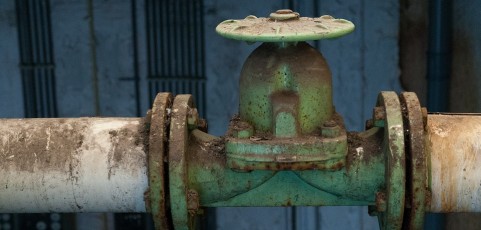Of all the jobs with oil and gas companies around the world, working on an offshore oil rig is perhaps the most dangerous. Located miles out to sea, these rigs rely on strict safety measures to keep workers safe and production continuous. One of the most dangerous aspects of being on these rigs is exposure to hydrogen sulfide, which can prove deadly if inhaled. To prevent H2S disasters from happening, many steps are put in place to make sure everyone on board stays safe.
Respiratory Protection
Because H2S is so dangerous if inhaled, offshore oil rigs have very extensive respiratory protection programs in place for workers. Drilling returns are constantly monitored, exhaust ventilation is put into place over shale shakers, and living quarters are outfitted with positive pressure ventilation that’s linked to automatic shutdown of HVAC systems if hydrogen sulfide is detected in the air. Also, because H2S is often released through pipes that have corroded, corrosion rings that can indicate weaknesses in the pipe are also installed. Along with this, breathing apparatus such as gas masks and oxygen tanks are located near drill pipes in the event of exposure.
Electronic Monitoring
Continuous monitoring of H2S levels is necessary for everyone’s safety, and an extensive system is usually in place on most offshore rigs. Fixed detection systems are located in many areas including the mud logging unit, drill floor, air intake to living quarters and mud pit room. The sensors used in these areas are always located as close to the point of release as possible, and are made to withstand the effects of steam, mud, water and most types of mechanical damage. Most electronic monitoring systems are constantly reviewed for maximum performance, and are made to be tested and calibrated from a control panel located in the rig control room.
Personal Monitors
Workers who spend much of their time in high-noise areas or in areas where an alarm may be difficult to hear are given personal H2S monitors to wear at all times. As an added safety measure, most offshore oil rigs install visual alarms such as strobes to alert workers to possible danger. When emergency response efforts become necessary, portable direct-reading monitors are available to rescue personnel, helping them monitor H2S levels while attending to other workers.
Monitoring System Inspection
To ensure all safety measures are at full capacity, monitoring systems are inspected on a regular basis. Usually done by the safety officer, all monitors are inspected to make sure they are in good working order and are capable of detecting dangerous levels of H2S in the area where they are located. Along with the fixed monitors, all personal monitors are also inspected to ensure they work properly. Inspections are done on a monthly basis, though some systems are checked weekly.
Of all the hazards associated with working on an offshore oil rig, hydrogen sulfide is considered one of the most serious. By having a monitoring system in place, workers can be much safer while doing their jobs.

